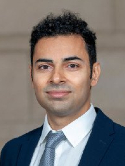| Abstract: |
Background: Electrical injuries of the scalp are a frequent occurrence in developing countries. Burns can be contact or conductive and result in extensive tissue damage. The authors present their experience with treatment of scalp and calvarial electrical injuries and propose a management algorithm. Methods: This was a retrospective cohort study comprising all patients with electrical injuries of the scalp treated at the authors' center between January of 2010 and December of 2016. Noncontrast computed tomography scans were obtained to assess viability of the calvarium in patients who presented more than 2 weeks after injury. Single-stage débridement and reconstruction were performed. All nonviable soft tissue and bone was removed. Soft-tissue reconstruction was performed with skin grafts, local scalp flaps, pedicled trapezius flaps, and free flaps (anterolateral thigh, latissimus dorsi, and scapular). Cranioplasty was performed in a delayed manner with autologous bone grafts. Results: Over a 7-year period, a total of 52 patients underwent scalp reconstruction for high-voltage (44 patients) and low-voltage (eight patients) electrical injury. All patients underwent successful soft-tissue reconstruction. Osteomyelitis with draining sinuses developed in three patients; these patients underwent flap re-elevation and bone débridement, which resulted in a healed wound and stable reconstruction. Cranioplasty was performed with split calvarial grafts in two patients and split rib grafts in four patients. One patient underwent scalp tissue expansion for hair restoration. Conclusion: The authors propose an algorithm for reconstruction of electrical injuries of the scalp. Thorough débridement of the calvarium is the most important determinant of a successful outcome. CLINICAL QUESTION/LEVEL OF EVIDENCE: Therapeutic, IV. © 2022 Lippincott Williams and Wilkins. All rights reserved. |




